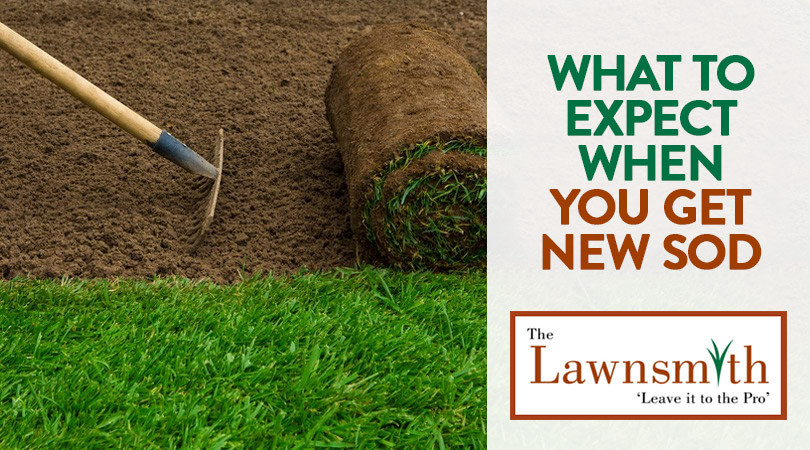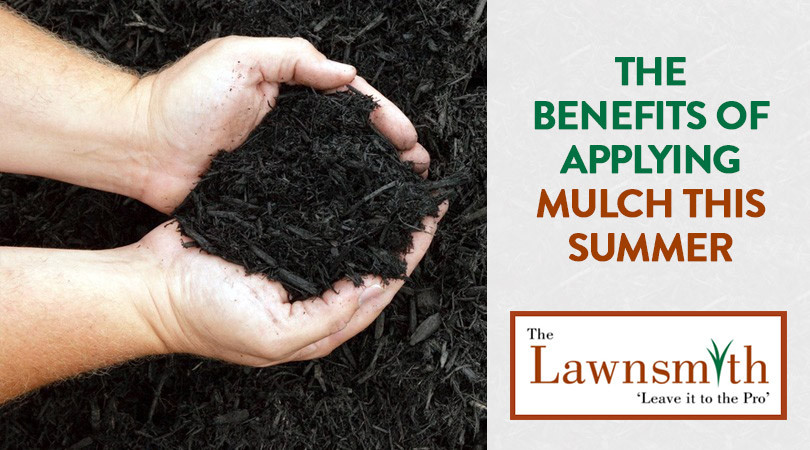What to Expect When You Get New Sod

7/5/2017
It’s never an easy decision to replace your lawn with sod, but sometimes it’s in such poor shape that nothing you do makes lasting improvements. Perhaps you’re having a new home built and want to ensure that you have high high-quality grass from the start. Sod, also known as turf grass, is fresh, pre-planted grass that the staff of The Lawnsmith transfers to your yard. It also contains roots and other plant material that holds it together. New sod provides many advantages, including the following:
Unlike grass seed when you must wait for your new lawn to grow, sod provides you with an immediate new lawn
- You won’t have to water sod as often as you would have to water grass seeds
- If the grass is a little long for your liking, you don’t have to wait to mow it
- Your new grass is healthy and weed-free
- It’s easier for sod to take root, which means it can provide more reliable results than you would get with grass seed
- You can lay sod at any time of year
The one possible disadvantage to choosing sod over grass seed is that many homeowners in Bloomington and the south metro areas of Minneapolis and St. Paul find it difficult to install by themselves. Fortunately, the professionals at The Lawnsmith have several years of experience with installing new residential lawns. It’s enjoyable for us to see a yard completely transform with healthy and attractive new grass.
Steps Involved in Sod Installation
Laying sod is an involved process. We normally follow a procedure that looks like this:
- Install a new irrigation system
- Remove stones, roots, and other debris to create a surface that is as smooth as possible
- Rake the sod’s soil until it falls below our desired grade by about two and one-half inches
- Install new lawn edging, which may be made from brick, concrete, plastic, or steel
- Add a compost and topsoil blend
- Create a base for your new lawn by grading the surface of the soil
- Ensure that your new grass has enough alkaline pH
- Carefully lay each row of sod and trim any excess edges
- Apply a starter fertilizer
- Spray water over the new grass
For best results, you should plan to water the newly installed sod three times daily for the first two weeks. If the temperature dips significantly or we experience heavy rain, you can cut back on your watering. Regular watering while the sod gets firmly established ensures that it gets off to the best possible start. Please contact The Lawnsmith to request an estimate or schedule a consultation today.
Photo Credit: erikreis / Getty Images
The Benefits of Applying Mulch This Summer

6/14/2017
Mulch helps to preserve plant life and insulate soil, which provides important benefits for your garden or landscape beds. It can be made from organic or non-organic material. The following are some of the most requested mulch types from our customers in Bloomington, Edina, Burnsville, and the surrounding communities:
- Bark
- Colored wood chips
- Grass clippings
- Gravel
- Pea gravel
- Stone
Even when you appreciate the benefits of mulch, knowing how much and which type to buy can be challenging. We provide a link to a mulch calculator on our website that prompts you to measure and enter the square feet of your mulch bed. You will receive the recommended amount of mulch after following a few other simple instructions. We are also happy to help you determine the correct amount and which type would perform best in your garden and landscape beds.
Mulching Benefits Extend Beyond What You Can See
Even though you provide your landscape beds and garden with fresh water, thick soil can prevent absorption so they don’t get as much nourishment as they need. Mulch slows down the speed of water evaporation, which means that your garden and landscaped areas receive optimal nourishment when it rains or you water the area with a sprinkler or hose. Some other non-aesthetic benefits of mulch include:
Even though you provide your landscape beds and garden with fresh water, thick soil can prevent absorption so they don’t get as much nourishment as they need. Mulch slows down the speed of water evaporation, which means that your garden and landscaped areas receive optimal nourishment when it rains or you water the area with a sprinkler or hose. Some other non-aesthetic benefits of mulch include:
- Slows the rate of weed growth
- Protects plant roots from extremes in temperature
- If the mulch is organic, it provides soil enrichment as it decomposes
- You won’t have to fertilize, water, or weed these areas of your lawn as often
The Mulch Application Process
Not putting down enough mulch is a common mistake that local homeowners make when attempting this task on their own. The mulch layer needs to be a minimum of two to three inches to keep the seeds contained in weeds from penetrating the barrier.
Our landscape maintenance crew takes special care to leave enough space between the mulch and your plants, perennials, shrubs, tree trunks, crowns of annual flowers, and vegetables. When mulch is placed too closely to these things, the retained moistures causes it to rot. After carefully pouring your mulch, we immediately clean up around your landscape bed and garden.
Not putting down enough mulch is a common mistake that local homeowners make when attempting this task on their own. The mulch layer needs to be a minimum of two to three inches to keep the seeds contained in weeds from penetrating the barrier.
Our landscape maintenance crew takes special care to leave enough space between the mulch and your plants, perennials, shrubs, tree trunks, crowns of annual flowers, and vegetables. When mulch is placed too closely to these things, the retained moistures causes it to rot. After carefully pouring your mulch, we immediately clean up around your landscape bed and garden.
Whether you want to learn more about applying mulch for the first time or require replenishment of your existing mulch, The Lawnsmith is available to help. Please contact us today to request a free estimate.
Photo Credit: / Getty Images


